With temperatures in London soaring to unbearable levels, a significant lack of cooling infrastructure (air conditioning isn’t a thing in homes here – YES, I KNOW), and a body that can’t really regulate itself all that well (autonomic dysfunction, FTW), summer can often feel like a special kind of hell for many people with chronic illness (or those whose bodies aren’t all that good at maintaining body temperature).
I mean, it doesn’t really help that I live in one of those new build flats that keep the heat in so well in winter that the heating only needs to be on for an hour or so (and I apparently live above the heating unit for the building *grumble*). But when the summer rolls round, it feels like a cruel joke trying to navigate chronic illness that is significantly impacted by weather with…weather. Especially because, again, no air conditioning. Waa.
Although my PoTS is more manageable throughout the year than it has been in the past, in the summer it feels like it comes back with a vengeance – and it’s actually incredibly upsetting, frustrating, and sometimes scary. I often have to keep reminding myself that is it, in fact, the weather that is triggering a lot of these symptoms, and not me falling backwards for good.
Which is why when wheelAIR reached out to me and asked if I’d like to review their wheelchair backrest cooling cushion, I jumped at the chance to learn more about the company, and see if it could help me cool down during the hottest days of the year.
Full disclosure: I was sent a two-week trial of the wheelAIR to test it out. This review has been sponsored by the company, but as always will reflect my honest experiences and thoughts on the product. Additionally, the Foldalite chair this was tested on and in the images was sent to me in exchange for a review earlier this year.
I’d actually heard of the wheelAIR before – I think I must have seen it floating around on Instagram and thought it was something that would be right up my alley (trying to maintain a stable body temperature is something I spend a lot of time on – I am basically queen of fans and heating pads). So, I went online with every intention of buying it…until I saw the price. £650. Stay with me here.
So, along with testing it out over the last couple of weeks, I wanted to learn more about the company, ask about the price, how they’re working to make this accessible to people through various means (including, OTs, Access to Work and the NHS), and the benefits it can have for people with all different kinds of disabilities.
I want to say a big thank you to Corien and Amy of wheelAIR for taking the time to answer all my questions, and I hope that you find this review helpful in making a decision as to whether a wheelAIR is right for you.
In terms of this review, it’s important to note that I am writing this from the perspective of an ambulatory wheelchair user who isn’t able to go out all that much, although I will be sharing information for people who are full-time wheelchair users, too.
What is the wheelAIR?
The wheelAIR is a wheelchair backrest cooling cushion, designed to improve comfort and reduce body temperature by removing excess heat and moisture from the backs of wheelchair users.
It works by blowing air onto the user’s back with a battery powered fan. It’s made with memory foam, which also offers extra support while seated. The company say that the cushion works best when used as a preventative measure – and can help to reduce fatigue and heat stress, whilst improving comfort.
wheelAIR was founded by Corien Staels, who first conceived of a wheelchair cooling cushion as part of her final project while she was studying fashion at university.
Her supervisor was a wheelchair user, and had spoken with Corien about the problems associated with overheating. This inspired her to look into medical and sports textiles (she had a background in sportswear design), and initially considered designing a cooling clothing line.
Corien travelled around Belgium and the Netherlands for research, speaking to athletes and retailers, learning more about the industry. And when it came to wheelchair users, she learned that overheating went beyond people feeling uncomfortable.
“You have people putting wet towels around them, as well as ice packs and misting sprays, to keep cool, and the wetness doesn’t go away,” she told me. “With the heat and moisture, the backrests would get dirty and smelly. I thought, Mercedes has cool cars – why don’t wheelchairs have cool seating? So I decided to do something about that.”
The first thing Corien looked into was the fabrics for the seats and different types of cooling, and found that airflow was the most user-friendly and efficient. She made her first prototype for her final project, and a few months later started an MA in Business and Entrepreneurship in Glasgow, and was encouraged to start her own business.
So she started from scratch, with no financial backing, and three months into the course, she won a major Scottish business competition, which provided her with funding to start over and work with design engineers on a full redesign with their own developed technology to create the wheelAIR.
Corien explained to me that the best way to think of the wheelAIR is not as an accessory. “It’s a backrest with much better materials than what’s on the market. Generally speaking, backrests are very thin, and a lot of ones that come with wheelchairs aren’t great.”
“So we started off with the backrest and then added the cooling mechanism with high quality fans and batteries so it’s safe. The memory foam we use is one of the most expensive on the market because it’s washable.”
“We are a CE marked product – which means our electronics have gone through the EMC testing at an approved test house. Before this, companies put computer fans in seating, but each time it’s a hacked together mechanism without battery safety components, tested PCB boards, no CE mark etc. This makes a huge difference in safety for the user.”
Since then, the wheelAIR has won multiple awards, and has the backing of some major players in the disability sphere, including Paralympic athletes, is being used on the wheelchairs at Edinburgh airport, and the company is working on studies to try to make sure the wheelAIR can be funded for everyone who could benefit from it..
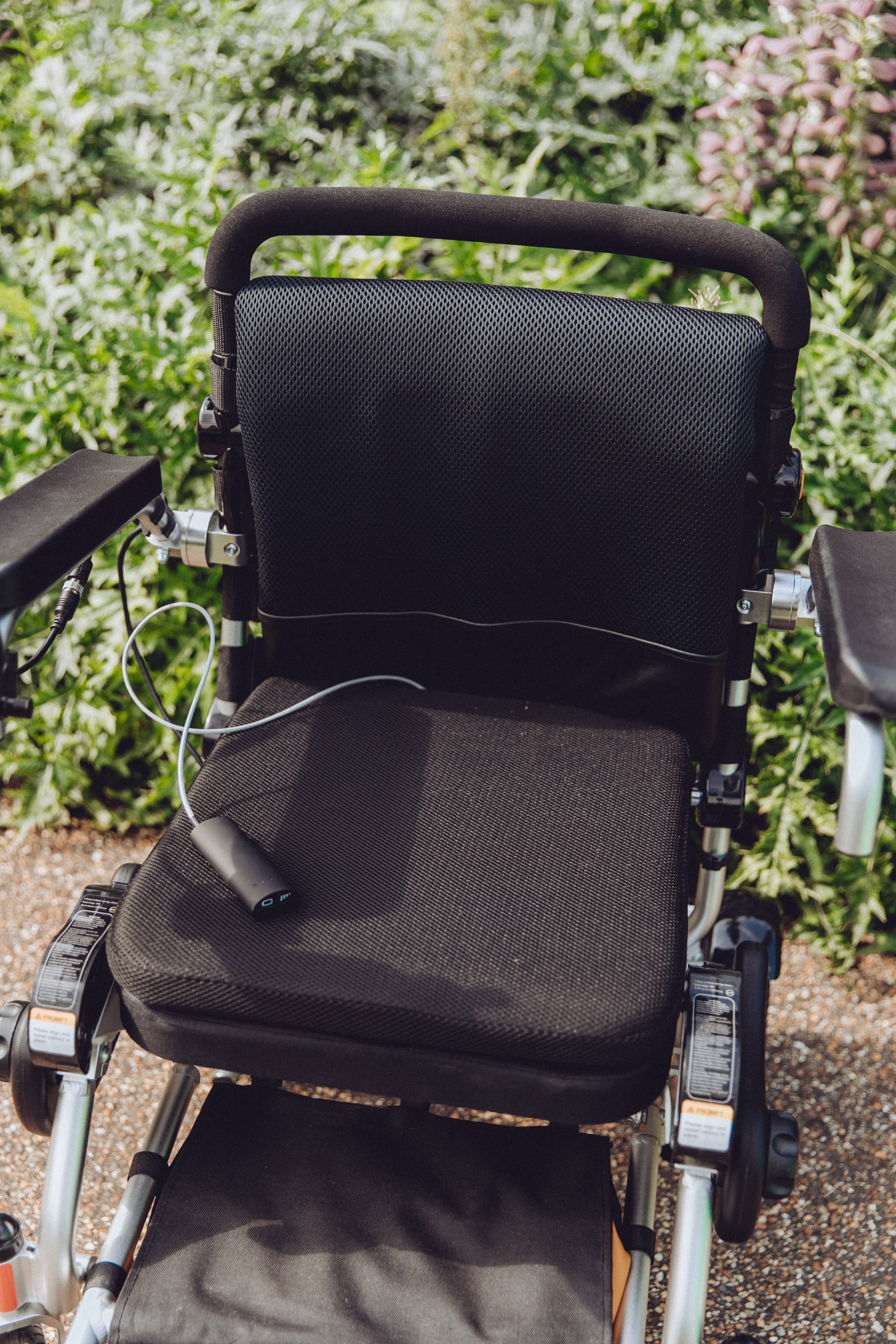
Ok, tell me about the cushion
Upon opening the box, I was immediately impressed with how attractive the cushion was. I’d seen images of it online, and it definitely looked sleek, but in person it just looked so much more modern than many of the other products that I’d seen for my wheelchair.
I could tell right away that it would just…fit in…with my chair, and look like it was made to be part of it, not something that people would notice as an accessory.
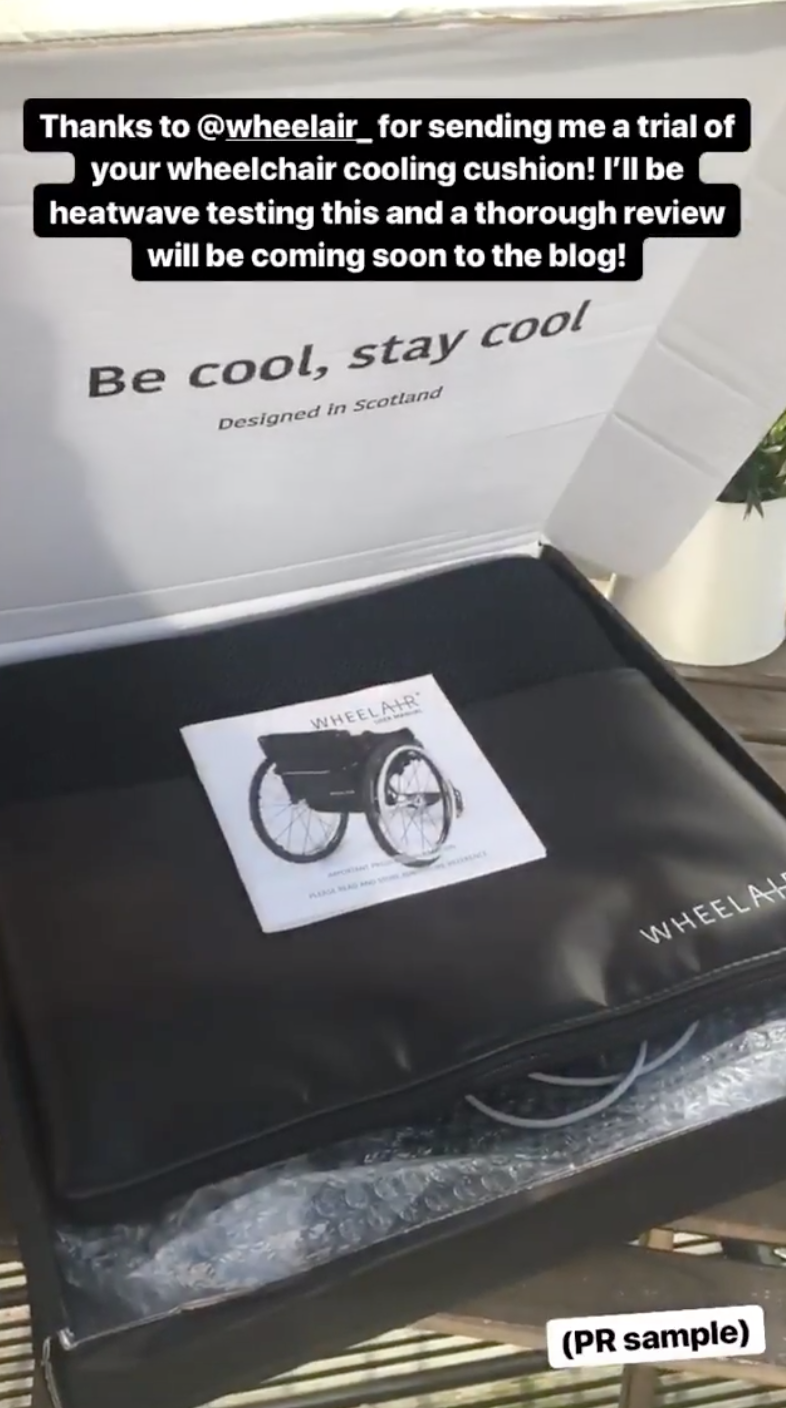
Corien told me that this was something that was really important to her during the design process.
“I’m so sick of seeing ugly products in the mobility space,” she said. “Not everyone who uses mobility devices are 80, and so that was one of my biggest motivations.”
When I asked her why she felt like this focus on design isn’t standard for companies making mobility equipment, she told me that many feel like they don’t have to: “They’re making products and think that people have to buy them because they need to – so they think ‘why should I spend money on advertising and design?’ But I believe people should want to buy it too.”
The wheelAIR is black, but in certain lights it looks navy (my best friend is convinced that it is). When I look closely I can see that there’s a very slight colour difference to my wheelchair but that’s going to be expected, and not really noticeable to anyone else. Otherwise really just looks like it’s part of the chair.
The outer cover is made from faux leather and covered with a spacer mesh with a FRESH finish, and the cushion is made with a viscoelastic foam and synthetic rubber channels.
It’s also worth noting that the wheelAIR is transit approved – although they do advise clicking off the fan box and taking it in hand luggage when travelling by air to make sure it doesn’t get damaged (because we all know what a nightmare travelling with a wheelchair can be!)
Not for every chair
It’s important to note that with the way the wheelAIR is designed, it will not work for every wheelchair.
It’s available in 6 widths to fit all active lightweight rigid and folding wheelchairs with a canvas backrest. The sizings are 90mm, 330mm, 360mm, 400mm, 420mm and 440mm – and custom options are also available upon request.
The max user weight that the product is designed for is 300lbs (136kg).
I could use this on my Foldalite powerchair because it has a removable canvas backrest and there are tension adjustable straps underneath it. It would not work, for example, on my Rascal P321 because it has a thick stuffed faux-leather cushion backrest.
They recommend getting in touch if you want to check if it would be right for your chair.
Sustainability
Sustainability is one of the core tenets of wheelAIR. Corien told me that all their materials are ethically sourced. “Our fabrics for example come from companies in Belgium and the UK – and are only 100% materials. This means they are easily recycled because there is no need to separate yarns.”
The product is made without natural rubber and animal leather, and their plastics were selected to be biodegradeable. Corien also told me that “the wheelAIR is made in a modular way so that each component can be replaced and can be recycled at any point that can recycle batteries. This ensures longevity of the product and makes sure we don’t end up in landfill after a few years. That’s how we view sustainability.”
The Studies
It’s worth noting here that I am not a scientist and therefore can only go on the evidence provided by wheelAIR in this section! There have been a couple of studies on the wheelAIR focussing on the cooling effects, and a recent NHS study from Guys & St. Thomas Wheelchair Services, which I’ll go into more information below.
There are numerous written case studies on their websites from wheelchair users with all different disabilities talking about the impact the wheelAIR has had on their life.
Corien told me that “next to user testing and evidence through case studies, we decided we also needed proof of how much we can cool down within a certain time frame. Other published research articles had focused on how the skin increases in temperature and by how much, and we added to that research by identifying the cooling down rate.”
This Clinical indications study measured 6 points on the skin, the clothing, and the fabric of the backrest.

I’d highly recommend reading their PDF that goes into more detail.
Corien also told me that a similar study was also undertaken by Nottingham Trent University with a more active setting (subjects pushing from wall to wall in a gym room), with the same results of the 2.5˚C drop in temperature within 3 minutes. The second phase of this study is still ongoing, and as such the results have not yet been published.
I think the most interesting thing for me was hearing about the NHS study “Can Ventilation Improve Posture?” because it showed the benefits the wheelAIR brought to the quality of life of Raphael, a 52-year old with multiple disabilities and extreme temperature regulation issues. This was previously managed by:
- changing his T-shirt 4x/day
- constantly wiping perspiration off his face
- four fans to cool him down
- changing in situ slings 2x/day
- towel behind his back
And after 12 months with the wheelAIR, the results were:
- uses 1- 2 shirts a day (was 4)
- His mother no longer has to wipe perspiration from his face
- no longer need to change in situ slings
- no towel required behind his back
- no longer scratches his head and knees
- reduction of redness to his back
You can read more about this study here.
My wheelAIR experience
I just so happened to test the wheelAIR for the first time on July 25th aka the hottest day of the year aka hell. My PoTS symptoms were the worst they’d been in a really long time, and I felt like I was living in a dizzy, sick, head-vice, hard to breathe, sweaty haze. So there really couldn’t have been a better time to bring more cooling equipment into my life.
Installation
It’s recommended to fully charge the product before your first use, and charging can take up to 20 hours if it’s totally empty. The fans will not work while charging, so you cannot use the wheelAIR while it’s charging.
The charge works like most other USB products – you just plug the cable into the USB charger they provide, and then attach that to the remote and plug into the wall (or anywhere else you can charge a USB).
It’s a lightweight charging device, which is appreciated compared to the bulky battery chargers for my wheelchair. The battery will last up to 20 hours when running on its lowest setting.
Once charged, it was time to put it onto my chair. The booklet comes with easy to follow instructions and images to help you do this. You can also see a video here:
I initially started to try and do this myself because I’m stubborn. And although it’s a simple enough process, pulling large pieces of velcro and bending, lifting, and doing all that kind of stuff was just a bit too much energy for me considering how I was feeling, so my best friend very kindly made me stop and got it all set up.
Essentially, we removed the current backrest, leaving the suspension support structure attached. The wheelAIR comes with velcro positioned in ways that can work for different chairs depending on how they’re set up. We removed the loop velcro strips and attached them to my chair. We stuck the front part of the cushion to the support structure and then folded it over, making sure the fan box was aligned just below my seat. Then we fed the remote through the front, and hey presto – a new backrest!
The fan box and remote weigh in at 450g and the cushion itself weighs between 750-860g depending on the size. Which is not heavy for the average person, but I have trouble with lifting things, so required help with this.
The remote
Firstly, I kinda can’t get over how GOOD the remote feels. It’s like this stone-cold slightly rough but in a nice way matte material that I just love to hold. It’s small, fits well in my hand, and incredibly easy to use.

It has two buttons on the top of the remote, and four LED lights that show fan speed (press the button on the right) and battery level (press the button on the left) You simply press the fan speed button to change the…you guessed it…fan speed, and to turn it off.
Too cool for school?
I think I probably went in with some unfair expectations of the cushion, considering I’d spent the last few weeks blasting the most powerful fan I had at the highest speed as close to my body as I could physically handle (which also had its downsides considering how that exacerbated some of my muscle spasms).
So, there I was, a living, breathing ball of sweat. I sat down on the chair and because it was just so bloody hot in my flat, I immediately turned it to the highest setting. I could hear the fan whirling (it makes a soft whirring hum-type noise) and started to feel some cool air making its way across my back.
But it wasn’t the burst of cold air that I’d become reliant on to cope with the heat this summer, so at first I was wondering whether this would work. I stayed sitting in my chair in my flat (remember, a steaming box of stagnant air), talking to my friend.
Over the next 15 minutes, I realised that I was starting to feel cooler and more comfortable without it being obvious that that was happening. I don’t know if that makes sense, but it was interesting, and not something I’d ever really experienced before.
The longer I sat in the chair, the more I noticed not that I was cooler per se, it was more that I wasn’t feeling as awful as I would usually feel in that situation. This is usually my way of telling how something works for me – it’s often less about the active thing, and more that I don’t notice the bad thing.
Corien told me that people often can notice the difference when they turn it off – and that was definitely the case for me. When I properly thought about it over the testing period, I definitely noticed that my body temperature remained way more stable than it usually does, and once I took it outside, I was able to be out longer than I otherwise would have been considering the heat.
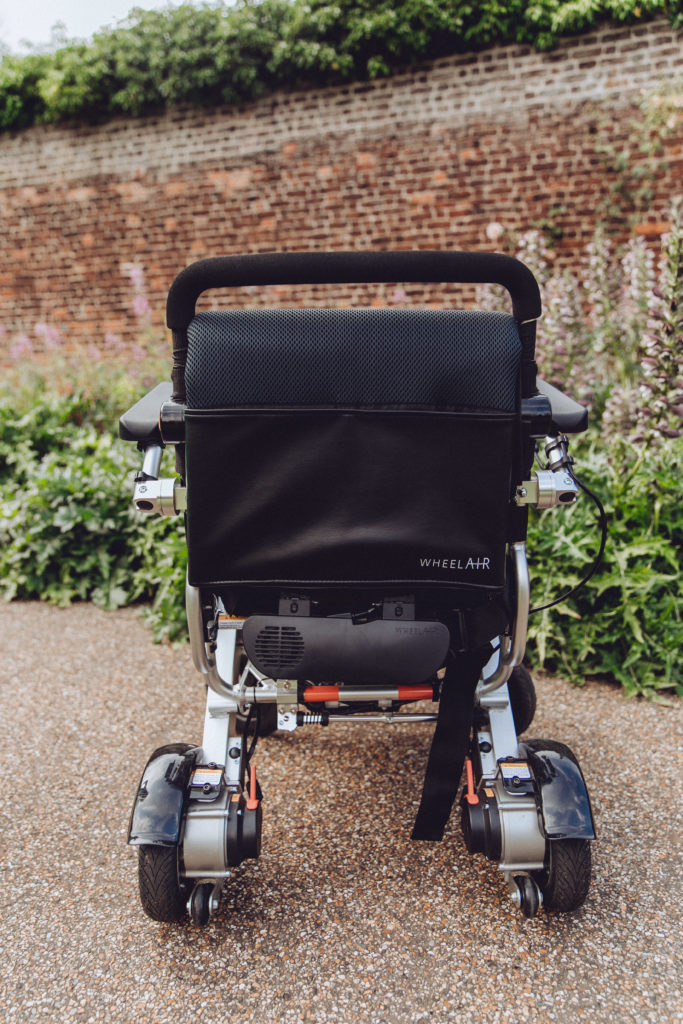
Each time I used it after that, when I returned home, I noticed that my overall comfort level during the tests was higher than it usually was, and I was able to sustain being out a little bit longer, with less symptoms of overheating than I had been expecting and would be normal for me.
Speaking of comfort, the backrest itself is very comfortable, and I think has given me the best posture I’ve ever had while sitting in my chair. At first I didn’t have it positioned perfectly, and it dug into the bottom of my shoulder blade a bit (I’m very short) but with some adjustment, we made it sit in the right place.
However, it’s important to remember that if you have an OT who helps you with all of that side of things with your wheelchair, you should talk to them before changing backrests.
One thing I didn’t think about was that I may have to be careful with the cushion when my back muscles are too spasm-y. This could have been because I was wearing thin dresses (I can imagine it’s great when wearing layers), but I do notice that when I use fans of any kind, if my back and neck are causing me severe pain, putting something cold on there for a prolonged period of time can exacerbate that. I often have to adjust the fans so they’re not blowing on me in certain angles, or wrap myself up in my duvet so the fan isn’t directly hitting my body. So it’s one of those balancing acts I love to hate.
The only other thing I noticed (which was partly my fault) was that I kept dropping the remote. I think because I’m just used to having access to controls for products, I wasn’t really sure what to do with it. A few times I turned the cushion on, sat down in the chair, and then forgot about it. If I had a little bag on my lap, I popped it in there, but a few times when it was on my lap, it just slid off, and I nearly ran it over.
After the third time of having it fall off my lap, I realised that there was a pocket on the back of the cushion that I could put it into. The only downside of this is that I would have to get out of the chair, or ask someone else for help, if I wanted to adjust the temperature, and the last time I did this, I forgot to turn the fan off when I got home.
Oh, and one final thing. Because the powerchair I was testing the product on can fold, it’s something that we (and by we I mean other people) can get in the boot of the car. And whilst the wheelAIR is easy to install and take on and off, a lot of the time when we go out in the car, we will very kindly get driven short distances to our closest accessible station (which is a pain in the arse by bus) and taking it on and off and reinstalling it after ten minutes can be a bit of an extra hassle for the people taking me.
The elephant in the room – the price
As I mentioned earlier, before testing the wheelAIR, the thing I couldn’t really get over was the price. I know that research and development of any product costs a lot of money, but I was definitely going into this with a mind on ‘could my audience afford this?’ and also ‘could I afford this?’ – which for me right now is a definite no.
This is something that Corien was more than willing to talk with me about, and I have to say I felt very reassured by what she said.
She recognises that the price is prohibitive for a lot of people, but makes it clear that she wants the wheelAIR to be seen as a medical device with medical benefits, and not a just a luxury product.
Of course, right now, if it’s something that is being self-funded, it is a big investment. However, the company aims to ensure as many people as possible who could benefit from the wheelAIR are able to get one funded for them, and not have to pay out of pocket.
“I am currently hiring someone to take us through that process,” Corien told me. It includes putting our case studies together, creating a cost analysis, and organising further clinical trials.”
And so far, people have been able to get wheelAIRs funded through several routes.
“There are grants available like the Access to Work Grant or from charitable organisations, or by having your OT delve into our case studies,” Corien explains. “We hope that the OT will see the clinical benefit the wheelAIR could have for their client. This has been successful in instances where we’ve stopped heat induced seizures, for example.”
Corien explained that they use high-quality materials to make the product, but because they’re still a small company, they don’t produce the volume needed to get big discounts from manufacturing companies (something many accessible brands I’ve spoken to have told me). They’re working on trying to get the price down but believe this is still several years away.
“It’s a difficult market. I wish wheelchairs were so much cheaper and I believe they can be,” Corien told me. “But the government pays for healthcare, so why would manufacturers lower the price? And then people have to self-fund and they’re suffering from that – it’s not something I can change on my own”
How can I get hold of a wheelAIR?
wheelAIR offers a two-week trial for people who want to see if the product is right for them.
Corien told me that one of the main reasons behind the trial was that people look at something like a wheelchair cooling cushion and think it’s gimmicky.
“We’re working in an industry where people have been sold things that don’t work, and are worried about that costing money. I want to prove that it does work and give people a chance to try it. I believe it will help people but likewise if it doesn’t work, I don’t want them to spend their money on it. I’d rather give them the option, and for people to save their money if it’s not right for them”.
The trial costs £20. If you’d like to keep it, they’ll collect it from your house and send you your own spanking new one. If you don’t want to keep it, they’ll collect it from you and you can get on with your life. I appreciate that home collection is available at no extra cost because it can be damn hard to get to the post office!
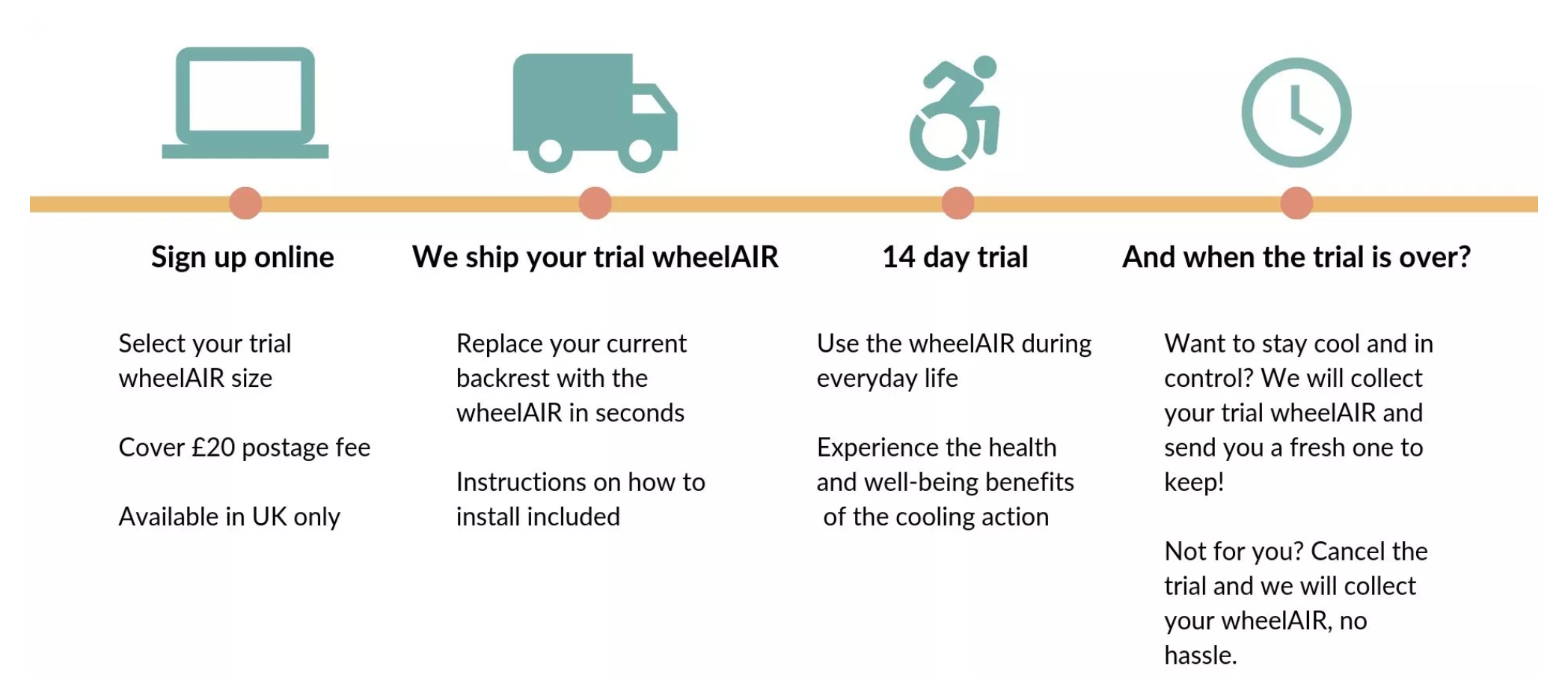
I love the fact that they have this as an option, especially with the price. It’s a great way to be able to test whether the wheelAIR will actually be of benefit to you and if it would be worth spending money, or trying to get hold of it through grants.
They also offer payment plans if the cost of the product is too high to afford straight out, which works out at £157.00 / month for 4 months and a £50.00 sign-up fee. The full breakdown is:
£207 upfront (£248.40 incl. vat) & £157 (£188.40 incl. vat) for 3 months after. Total cost = £678 (£813.60 incl. vat)
You’ve made it this far! To conclude:
So, ultimately, where do we land with all of this?
Overall, I’m thoroughly impressed with the wheelAIR as a product. Hearing more about the history of the company and their aims for the future, I’m truly excited about the work that they’re doing for wheelchair users, and I think that it’s something that could make a significant difference to a lot of people.
Corien told me that their goal for the future is to be the cooling and heating technology hub for wheelchair users – so they don’t have to worry about being too hot or too cold ever again.
“We want to focus on bringing microclimate tech into the forefront of conversations – people know how to deal with things like pressure sores but temperature and moisture are usually issues that don’t get the same level of understanding. Our aim is, through the right partnerships, to offer the wheelAIR system in all types of seating, ranging from manual chairs to power chairs and custom moulded seating. We want to make sure that any health issues related to heat, moisture or being too cold are no longer on the table.”
I did find that the cushion kept my overall body temperature much more stable, even on the days that weren’t the hottest day of the year. In fact, I kinda wanted to just sit in it all day in the house because it kept me at a more stable temperature overall. It actually made me feel like I was able to go outside when it was hot and less scared that I would zonk out. It gave me a confidence that I wouldn’t usually have to leave the house, when I otherwise would have stayed isolated in my room in front of my fan – which is a big deal.
The cushion itself is comfortable and supportive, and I immediately noticed that it helped with my posture while sitting in the chair. Because I still spend most of my time in bed, I do generally find sitting in my chair for even relatively short lengths of time quite difficult, and have never sat up that straight while out before!
Of course, it’s not a magical solution to my PoTS – fundamental management tools like hydration, salt intake, and being aware of how long I am sitting up for are still incredibly important. But it looks incredibly attractive, is easy to use, and made a noticeable difference comfort-wise.
However, as I mentioned at the beginning, I can only review this product from the perspective of being an ambulatory wheelchair user who doesn’t actually go out all that much. So, even with the benefits I experienced and the potential it has to add more ‘going out’ and body temperature regulation (sigh) into my life, with the price tag of £650, it isn’t something that I could justify spending money on unless I had the disposable income (which I don’t), or I could get one funded.
From the case studies and independent research that’s being carried out, I see a huge amount of potential in wheelAIR, but I think that price, if self-funding, is more justified for people who use their wheelchair substantially more than I do, as it’s rare for me to go out more than once a week (twice on a good week). They have some really interesting case studies on their website that I’d highly recommend checking out to get experiences from full-time wheelchair users with different disabilities to mine.
I’m particularly excited to hear about the work they’re doing to ensure that people without the financial means to access the device have the ability to do so – and hope to see this developing more in the future. And I can’t wait to see what wheelAIR do over the next few years!*
*especially heating tech because oh my god going out in the winter is a frozen HELL.
A huge thank you to wheelAIR for sponsoring this review and for giving me the opportunity to trial the backrest cooling cushion.
You can find out more about the company on their website here and you can try their two-week trial for £20 here.
Photography by Kaye Ford

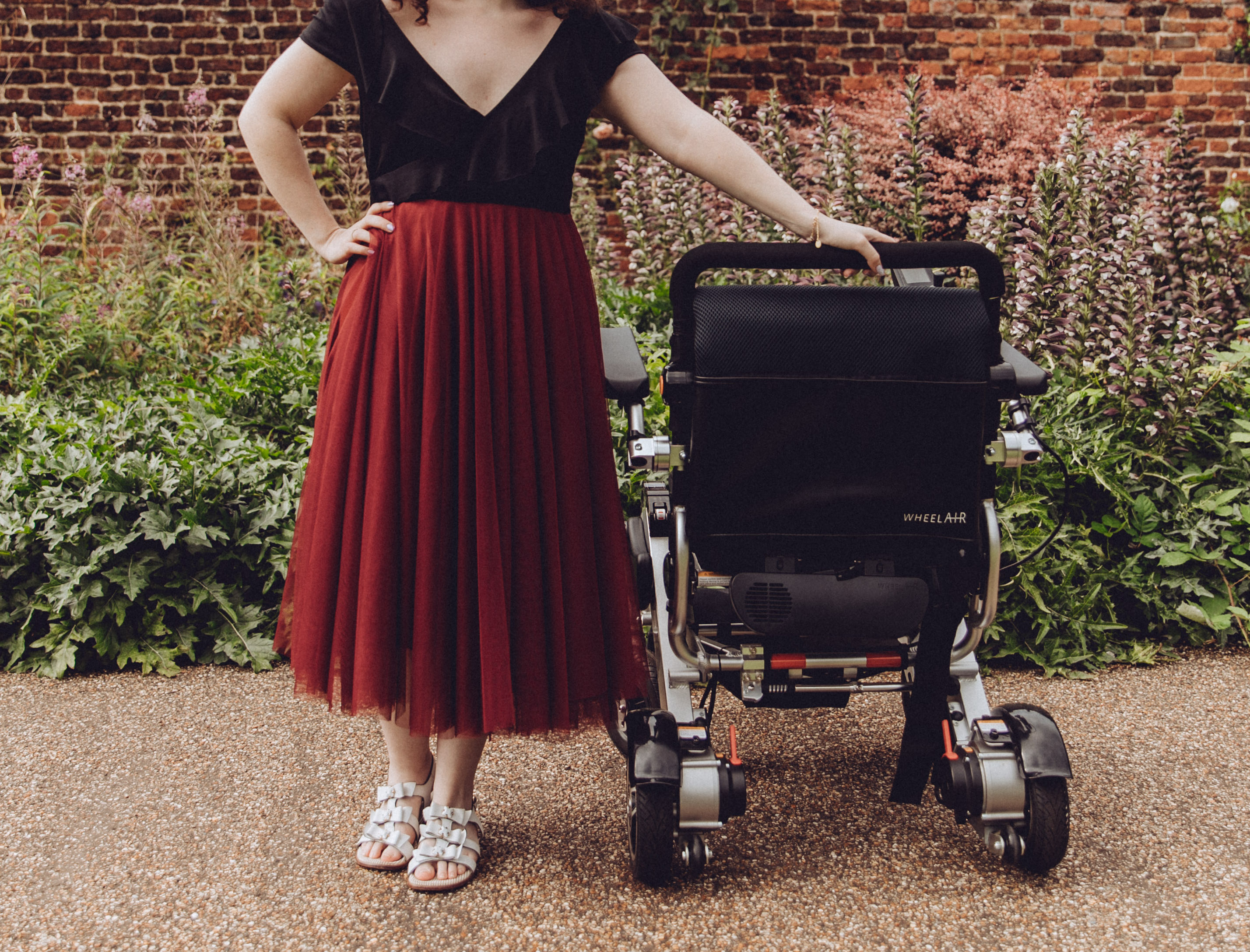
Natasha, I am glad that you hot the WheelAir because summer can be quite hot and humid in the summer months of July and August. especially July which is the hottest month of the year in the Northern Hemisphere. What is the average temperature in July and August where you live in London, England?
Sounds great. Wonder if they would make a similar cushion for use at home for people such as yourself?
omg or something over my mattress